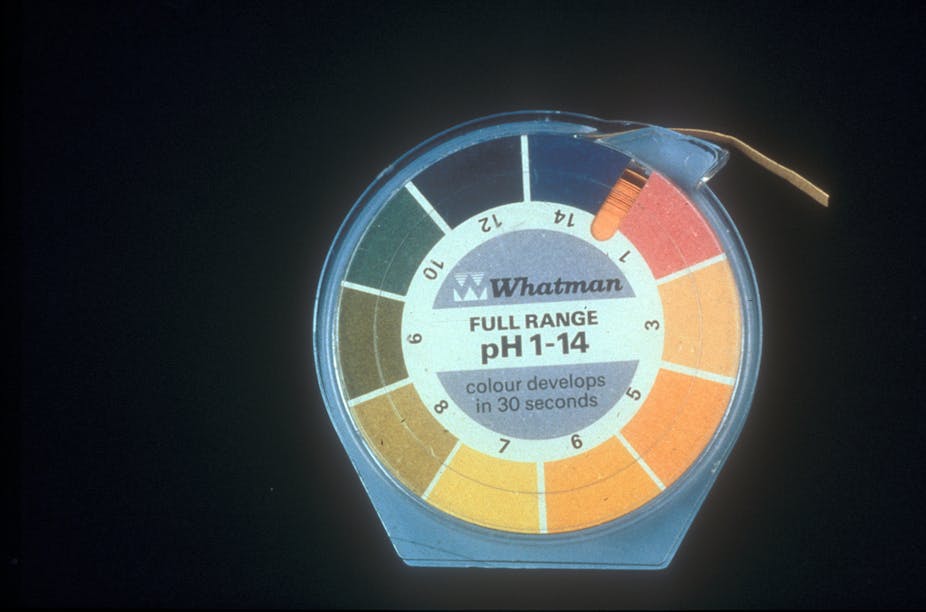Ocean acidification - where the ocean becomes less alkaline as it absorbs excess CO2 from the atmosphere - has been described as the evil twin of global warming. Yet, remarkably, it is only over the past decade that scientists have started to recognise the very real threat it poses to coral reefs and other marine ecosystems.
As late as 2004, a survey conducted among coral reef scientists revealed ocean acidification was ranked 36th out of 39 identified threats to coral reefs, well below other threats such as tourism, scientific research and the aquarium trade.
Fast-forward to 2013 and it is widely recognised that ocean acidification is becoming one of the top threats to coral reefs. The surface ocean has already taken up approximately one-quarter of the anthropogenic CO2 emitted into the atmosphere, leading to increasing acidity.
Atmospheric CO2 will only increase from here, so the impacts of these chemical changes to coral reef organisms and ecosystems in the future are likely to be significant.
Worryingly, new research suggests that we may still be underestimating the size of the impact and how soon irreversible damage could occur.
Understanding ocean acidification
We’ve known for over a century that when carbon dioxide (CO2) dissolves in water it forms a weak acid called carbonic acid. But the term ocean acidification was coined only in 2001.
In 2003 a seminal paper showed at a global scale how pH was likely to decline in the ocean as a result of increasing anthropogenic CO2 emissions.
Armed with predictions of how ocean carbon chemistry would change in the future, research quickly shifted to determine the biological impacts of an increase in ocean CO2 levels. Ten times more acidification papers were published in 2010 than 2004. The majority reported biological responses.
While knowledge of how marine organisms respond to changes in seawater pH and CO2 has been rapidly evolving, our understanding of the chemistry itself has struggled to keep pace. Globally it was predicted that ocean pH would drop by approximately 0.4 units by the end of this century. This was predicted to lead to a decline in the growth of corals and possibly lead to a net dissolution of coral reefs.
A glimmer of hope appeared for coral reefs when recent observations showed that a number of shallow reefs already had a natural pH variability that exceeded predicted end-century levels. This work suggested organisms living within these environments may tolerate a wide range of pH conditions and be more resilient to future changes.
Hope for the reefs dashed
Unfortunately, following our recent research showing the first coral-reef specific chemistry forecast for this century, the situation now looks much less hopeful. It found that not only does the uptake of CO2 from the atmosphere into the ocean increase seawater CO2 levels and reduce pH in the ocean, it also causes a reduction in the ability of the ocean to buffer natural changes.
We found that natural daily and seasonal changes to seawater CO2 levels and pH would not increase linearly in shallow ecosystems but would instead be dramatically amplified. The ocean pH around shallow reefs is expected to reach extreme levels by the end of the century, placing it well outside the envelope of conditions that reef organisms currently experience.
When exposed to higher CO2 levels, corals and other reef-building organisms - such as coralline algae - produce their calcium carbonate skeletons at a slower rate. It is the calcium carbonate from these skeletons that forms the reef framework and provides habitat in one of the most biodiverse environments on earth. Slower calcification in these species threatens the ability of the reef itself to maintain integrity as a complex habitat into the future.
Other diverse responses to ocean acidification have been observed, including an increase in algal growth, the impairment of the neurological function in reef fish and reduced coral recruitment success. Importantly, the studies that showed these impacts were based on global-scale ocean chemistry predictions, not the extreme changes now expected to occur in shallow reef systems.
Ocean pH on coral reefs is highly variable now, and likely to become much more variable in the future. There is an urgent need to test the response of organisms to increasing extremes on top of the already recognised persistent decline in ocean pH.
It is important to consider that the current rate of increase in ocean acidity is 100 times faster than the rate of change in the last million years of earth’s history.
The absolute level of CO2 in the ocean, combined with the rapid rate of change, mean many organisms will not be able to adapt to such dramatic changes in the future. If we allow CO2 emissions to increase unabated it will likely take thousands of years for chemical changes in the ocean to return to conditions like those today.
Although the jury is still out on whether global warming or its “evil twin” ocean acidification poses the greatest threat to coral reefs, it is safe to say that ocean acidification is certainly the more silent threat.
If you go to the Great Barrier Reef today you won’t see any visible warning sign of ocean acidification. By the time changes can be clearly seen on the reef, it will likely be too late to reverse them.
The acidification of our oceans is a direct consequence of increasing CO2 levels. The only way to reduce these dangerous changes and is to limit our emissions.

